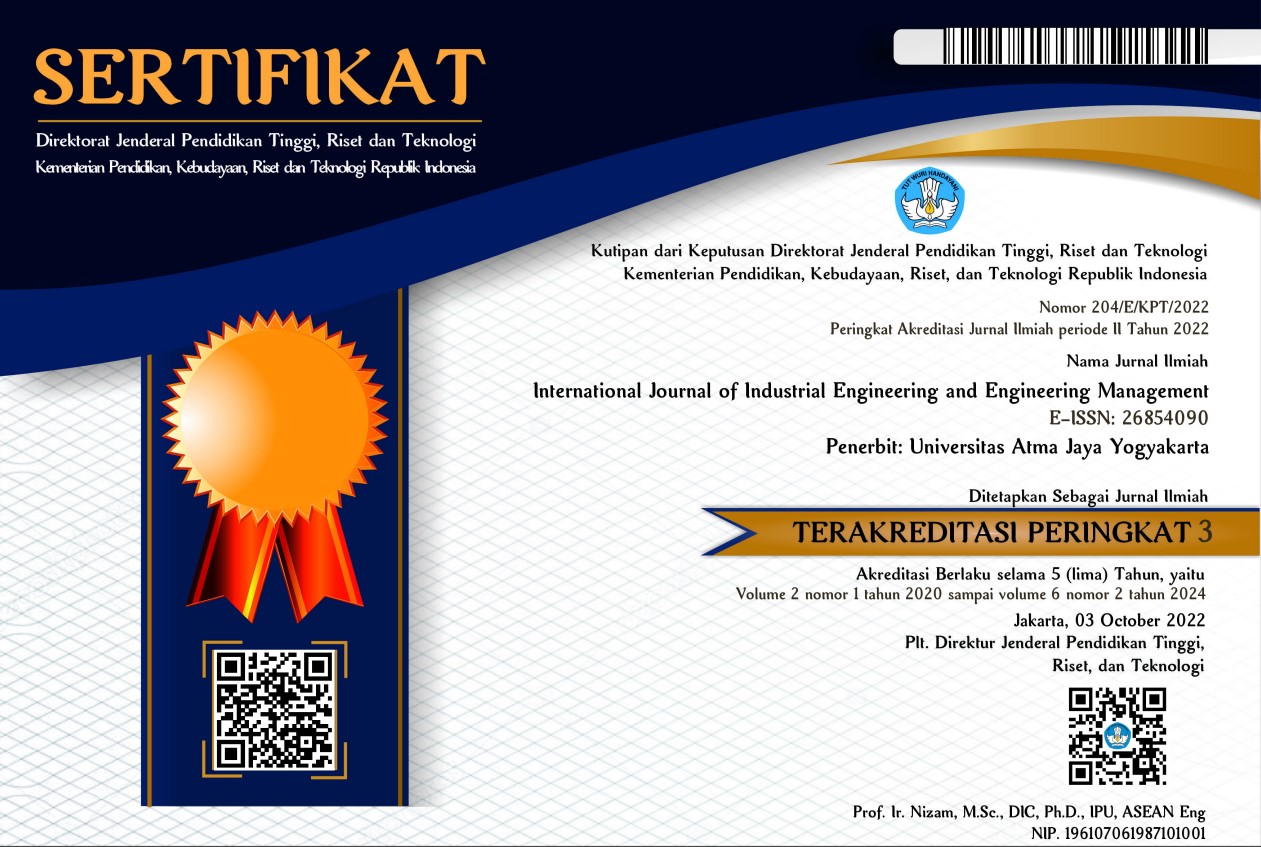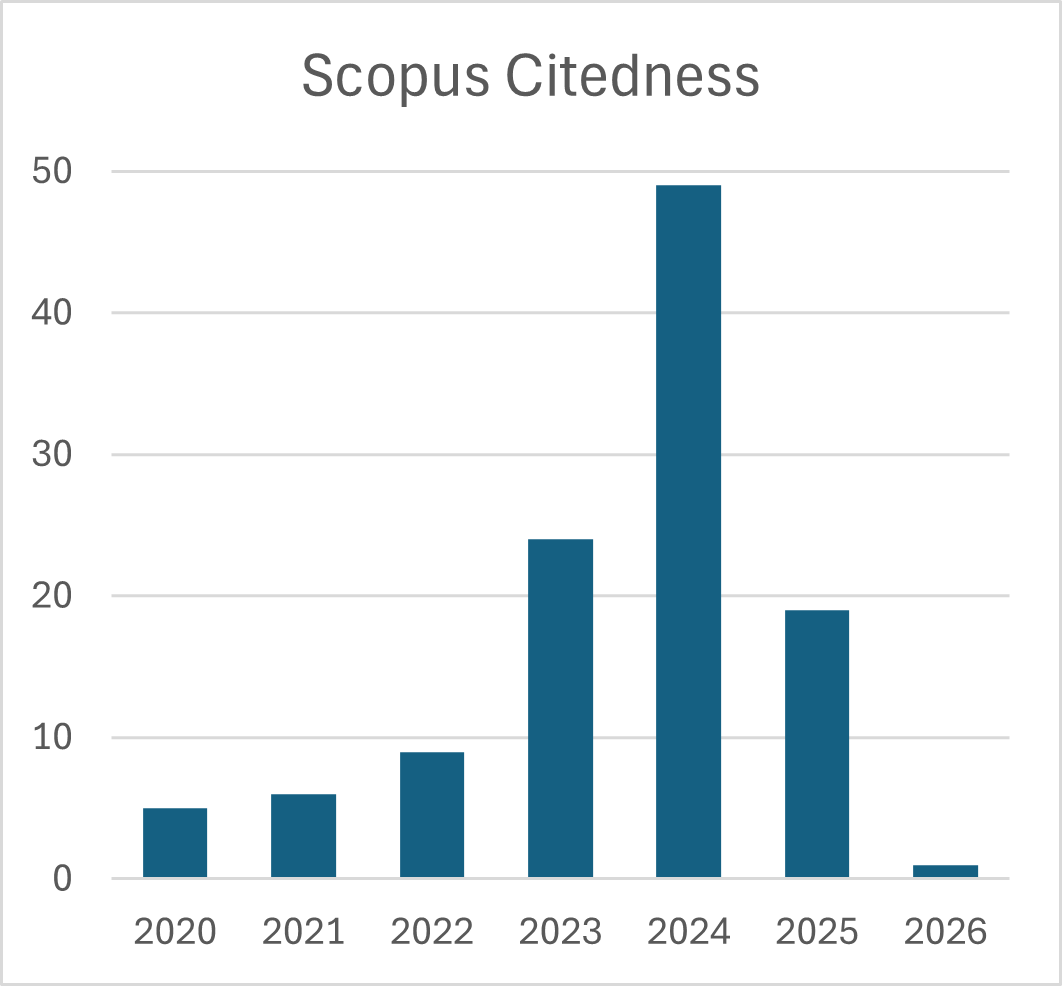Does Customer Satisfaction Really Lead Company to Financial Success? A Review and Meta-analysis
DOI:
https://doi.org/10.24002/ijieem.v1i1.2295Keywords:
customer satisfaction, financial performance, meta-analysis, correlationAbstract
All the theories about market and marketing research, customer relationship management, and business in general, believe that customer satisfaction is one of the main factors for company financial success. However, a survey on 64 studies shows a wide variation of the correlation between customer satisfaction and financial performance. The correlation coefficients are varied from -0.256 to 0.899. This study applies a meta-analysis on those 64 studies’ findings to find the true correlation between customer satisfaction and financial performance. The analysis clusters the 64 studies based on year of research, business category observed, and geographical area of research. The result shows that the correlation between customer satisfaction and financial performance is relatively high (0.525) before 1990, becomes confusing (not-significantly correlated) in 1991-2000, increases (0.626) in 2001-2010, and decreases (0.595) after 2011. Based on business category, the two variables are not significantly correlated both in manufacturing industries and in service industries. The two variables are significantly correlated according to the studies conducted in Europe region (0.566) and Asia-Africa (0.657), but could not to be proven significantly correlated in USA region. The insights from the meta-analysis findings are: (1) the customer satisfaction role is change by time as well as the changes of industry environment, so that research on customer satisfaction will always be beneficial; (2) in individualist society like USA, further researches on customer behavior and culture are required to find more clear explanation about the role of customer satisfaction as well as other financial success factors, on the company performance.
References
Akbar, A.A. & Djatmiko, T. (2016). Pengaruh e-service quality terhadap e-customer satisfaction dan e-customer loyalty pada lazada.co.id (The impact of e-service quality towards e-customer satisfaction and e-customer loyalty in lazada.co.id). e-Proceeding of Management, 3(1), 142-150. (*)
Ali, R., Leifu, G., Rafiq, M.Y., & Hassan, M. (2015). Role of perceived value, customer expectation, corporate image and perceived service quality on the customer satisfaction. The Journal of Applied Business Research, 31(4), 1425-1436. (*)
Alrubaiee, L. (2012). Exploring the relationship between ethical sales behavior, relationship quality, and customer loyalty. International Journal of Marketing Studies, 4(1), 7-25. DOI: 10.5539/ijms.v4n1p7 (*)
Anderson, E.W. & Sullivan, M.W. (1993). The antecedents and consequences of customer satisfaction for firms. Marketing Science, 12(2), 125-143. DOI: 10.1287/mksc.12.2.125 (*)
Anderson, E.W., Fornell, C., & Lehmann, D.R. (1994). Customer satisfaction, market share, and profitability: Findings from Sweden. Journal of Marketing, 58(3), 53-66. DOI: 10.2307/1252310 (*)
Calvo-Porral, C. & Lévy-Mangin, J.-P. (2015). Smooth operators? Drivers of customer satisfaction and switching behavior in virtual and traditional mobile services. Revista Española de Investigación de Marketing ESIC, 19, 124-138. DOI: 10.1016/j.reimke.2015.03.001 (*)
Chang, T.H., Lee, J.Y., & Chen, R.H. (2008). The effects of customer value on loyalty and profits in dynamic competitive market. Computational Economics, 32, 317-339. DOI: 10.1007/s10614-008-9141-7 (*)
Chicu, D., Pàmies, M.M., Ryan, G., & Cross, C. (2018). Exploring the influence of the human factor on customer satisfaction in call centres. BRQ Business Research Quarterly, 22(2), 83-95. DOI: 10.1016/j.brq.2018.08.004 (*)
Cho, Y.N. & Rutherford, B.N. (2011). Customers’ relationship with the service firm and its sales personnel: Does gender matter? Journal of Marketing Theory and Practice, 19(3), 325-336. DOI: 10.2753/MTP1069-6679190306 (*)
Chopra, S. & Meindl, P. (2004). Supply Chain Management: Strategy, Planning, and Operations. 2nd ed. Pearson Education, New Jersey.
de Mooij, M. & Hofstede, G. (2011). Cross-cultural consumer behavior: A review of research findings. Journal of International Consumer Marketing, 23, 181-192. DOI: 10.1080/08961530.2011.578057
Elsevier, B.V. (2019). ScienceDirect. https://www.sciencedirect.com/
Emerald Publishing Ltd. (2019). emeraldinsight. https://www.emeraldinsight.com/
Eren, S.S., Eren, M.S., Ayas, N., & Hacioglu, G. (2013). The effect of service orientation on financial performance: The mediating role of job satisfaction and customer satisfaction. Procedia - Social and Behavioral Sciences, 99, 665-672. DOI: 10.1016/j.sbspro.2013.10.537 (*)
García-Madariaga, J. & Rodríguez-Rivera, F. (2017). Corporate social responsibility, customer satisfaction, corporate reputation, and firms’ market value: Evidence from the automobile industry. Spanish Journal of Marketing, 21(S1): 39-53. DOI: 10.1016/j.sjme.2017.05.003 (*)
Gruca, T.S. & Rego, L.L. (2005). Customer satisfaction, cash flow, and shareholder value. Journal of Marketing, 69(3), 115-130. DOI: 10.1509/jmkg.69.3.115.66364 (*)
Gustafsson, A., Johnson, M.D., & Roos, I. (2005). The effects of customer satisfaction, relationship commitment dimensions, and triggers on customer retention. Journal of Marketing, 69(4), 210-218. DOI: 10.1509/jmkg.2005.69.4.210 (*)
Hunter, J.E. & Schmidt, F.L. (2004). Methods of Meta-analysis: Correcting Error and Bias in Research Findings. 2nd ed. Sage Publications, Inc., California.
Ibojo, B.O. (2015). Impact of customer satisfaction on customer retention: A case study of a reputable bank in Oyo, Oyo State, Nigeria. International Journal of Managerial Studies and Research, 3(2), 42-53. (*)
ITHAKA (2019). JSTOR. https://www.jstor.org/
Ittner, C.D. & Larcker, D.F. (1998). Are nonfinancial measures leading indicators of financial performance? An analysis of customer satisfaction. Journal of Accounting Research, 36, Studies on Enhancing the Financial Reporting Model, 1-35. DOI: 10.2307/2491304 (*)
Jaramillo, F., Ladik, D.M., Marshall, G.W., & Mulki, J.P. (2007). A meta-analysis of the relationship between sales orientation-customer orientation (SOCO) and salesperson job performance. Journal of Business & Industrial Marketing, 22(5), 302-310. DOI: 10.1108/08858620710773431 (*)
Keiningham, T.L., Aksoy, L., Cooil, B., Peterson, K., & Vavra, T.G. (2006). A longitudinal examination of the asymmetric impact of employee and customer satisfaction on retail sales. Managing Service Quality, 16(5), 442-459. DOI: 10.1108/09604520610686124 (*)
Khan, M. & Dost, Z.R.K.B. (2011), Rationale and proclivity of sales promotion influencing the impulsive buying behavior of the customers: An experimental study on cellular service providers in Pakistan. Interdisciplinary Journal of Contemporary Research in Business, 3(1), 346-362. (*)
Khong, K.W. & Yao, H.I. (2011). Effectiveness of customer relationship management on customer satisfaction in the commercial banks of Taiwan. Contemporary Management Research, 7(2), 105-116. DOI: 10.7903/cmr.6328 (*)
Khuong. M.N. & Dai, N.Q. (2016). The factors affecting customer satisfaction and customer loyalty — A study of local taxi companies in Ho Chi Minh City, Vietnam. International Journal of Innovation, Management and Technology, 7(5), 228-233. DOI: 10.18178/ijimt.2016.7.5.678 (*)
Kotler, P., Armstrong, G., & Opresnik, M.O. (2018). Principles of Marketing, 17th ed., Pearson Eduction. Ltd.
Kristensen, K., Martensen, A., & Gronholdt, L. (1999). Measuring the impact of buying behaviour on customer satisfaction. Total Quality Management, 10(4-5), 602-614. DOI: 10.1080/0954412997587 (*)
Liang, R.D. & Zhang, J.S. (2011). The effect of service interaction orientation on customer satisfaction and behavioral intention: The moderating effect of dining frequency. Procedia Social and Behavioral Sciences, 24, 1026–1035. DOI: 10.1108/13555851211192740 (*)
Lin, S.H. (2012). Effects of ethical sales behavior considered through transaction cost theory: To whom is the customer loyal? The Journal of International Management Studies, 7(1), 31-40. DOI: 10.12816/0002265 (*)
Liu, A.H & Leach, M.P. (2001). Developing loyal customer with a value-adding sales force: Examining customer satisfaction and the perceived credibility of consultative salespeople. The Journal of Personal Selling & Sales Management, 21(2), 147-156. DOI: 10.1080/08853134.2001.10754265 (*)
Malshe, A. & Agarwal, M.K. (2015). From finance to marketing: The impact of financial leverage on customer satisfaction. Journal of Marketing, 79, 21-38. DOI: 10.1509/jm.13.0312 (*)
Minh, N.V. & Huu, N.H. (2016). The relationship between service quality, customer satisfaction and customer loyalty: An investigation in Vietnamese retail banking sector. Journal of Competitiveness, 8(2), 103-116. DOI: 10.7441/joc.2016.02.08 (*)
Mittal, V., Anderson, E.W., Sayrak, A., & Tadikamalla, P. (2005). Dual emphasis and the long-term financial impact of customer satisfaction. Marketing Science, 24(4), 544-555. DOI: 10.1287/mksc.1050.0142 (*)
Osterwalder, A. & Pigneur, Y. (2010). Business Model Generation. John Wiley & Sons, Inc., New Jersey.
Palit, H.C., Kristanti, M., Aysia, D.A.Y., & Priskila, A. (2016). The effect of service quality and customer satisfaction on customer loyalty of small scale Indonesian food enterprises in Surabaya. 4th International Conference on Disciplines in Humanities and Social Sciences, 32-37.
Pickle, H.B. & Rungeling, B.S. (1973). Empirical investigation of entrepreneurial goals and customer satisfaction. The Journal of Business, 46(2), 268-273. DOI: 10.1086/295529 (*)
Quddus, F.S.A. & Hudrasyah, H. (2014). The influence of service quality dimensions on customer satisfaction and customer loyalty in PT JNE North Bandung Area. Journal of Business and Management, 3(5), 546-556. (*)
Rigopoulou, I.D., Chaniotakis, I.E., Lymperopoulos, C., & Siomkos, G.I. (2008). After-sales service quality as an antecedent of customer satisfaction: The case of electronic appliances. Managing Service Quality, 18(5), 512-527. DOI: 10.1108/09604520810898866 (*)
SAGE Publications (2019). SAGE journals. https://journals.sagepub.com/
Schwepker C.H.Jr. & Good, D.J. (2011). Moral judgment and its impact on business-to-business sales performance and customer relationships. Journal of Business Ethics, 98, 609-625. DOI: 10.1007/s10551-010-0641-8 (*)
Springer Nature Switzerland AG (2019). SpringerLink. https://link.springer.com/
Strenitzerová, M. & Gaňa, J. (2018). Customer satisfaction and loyalty as a part of customer-based corporate sustainability in the sector of mobile communications services. Sustainability, 10(1657). DOI: 10.3390/su10051657 (*)
Susanty, A. & Kenny, E. (2015). The relationship between brand equity, customer satisfaction, and brand loyalty on coffee shop: Study of Excelso and Starbucks. ASEAN Marketing Journal, VII(1), 14-27. DOI: 10.21002/amj.v7i1.4481 (*)
Valenzuela, L.M., Mulki, J.P., & Jaramillo, J.F. (2010). Impact of customer orientation, inducements, and ethics on loyalty to the firm: Customers’ perspective. Journal of Business Ethics, 93, 277-291. DOI: 10.1007/s10551-009-0220-z (*)
Wahab, N.A., Hassan, L.F.A., Shahid, A.A.M., & Maon, S.N. (2016). The relationship between marketing mix and customer loyalty in hijab industry: The mediating effect of customer satisfaction. Procedia Economics and Finance, 37, 366-371. DOI: 10.1016/S2212-5671(16)30138-1 (*)








